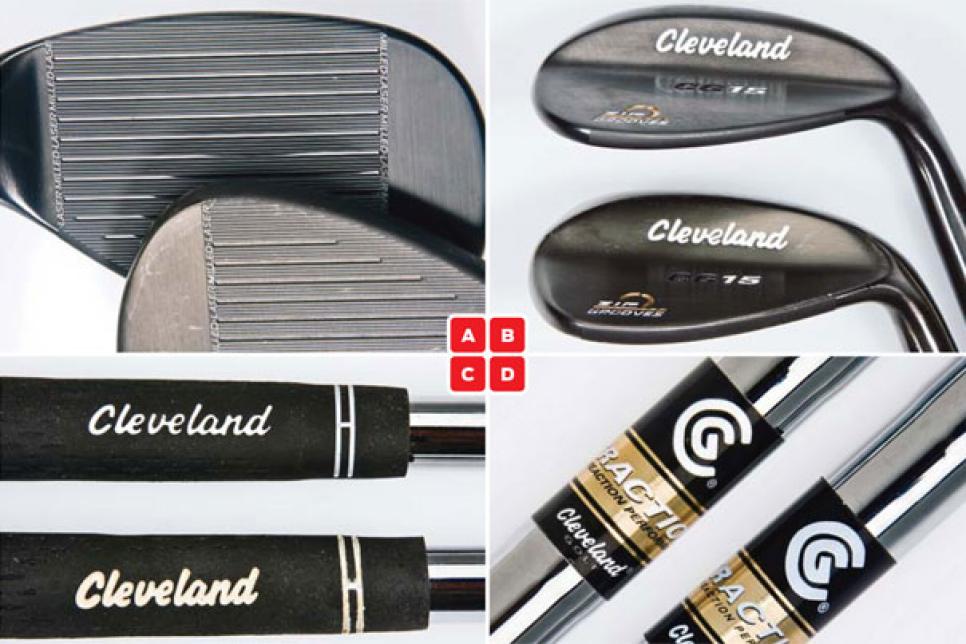Equipment
Golf's $6 Billion Problem

SPOT THE FAKE: Cleveland's CG15 wedge was copied even before it debuted. You can see subtle irregularities in the size of engraving and printing. But harder to see (and more damaging) are the inconsistencies in groove depth and spacing, head weight and shaft flex. By the way, the fakes are on the bottom in A, B, C and D.
__GOUGE:__The biggest problem in the equipment industry isn't how far the ball flies or even what grooves should be legal. No, the real devil is counterfeit clubs. They look like the real thing, but they smell like fetid cheese. And the reason they continue to exist is because we let them. Counterfeiters wouldn't be around if golfers weren't buying their products. How bad is the problem? One leading clubmaker plans to introduce a new iron in the spring that's already available online in counterfeit form. Despite the best efforts from manufacturers and authorities to combat this problem, they are scratching out only the most egregious offenders.
The problem starts when legitimate manufacturers rely on inexpensive manufacturing in China, where the lack of respect for intellectual property seems to be the national pastime. However, it doesn't help when consumers in our country buy things at prices they know are too good to be true. If the club isn't legit, it's likely to perform in an inferior way, and in the end it's going to cost the rest of us more money and hamper future innovation.
BOMB: Actually, partner, one of the problems is that fewer and fewer counterfeit products are available at too-good-to-be-true prices. The crooks have improved the cosmetics of counterfeits and have started pricing their copies more in line with lawful products to reduce suspicion. Today, counterfeit pricing tends to resemble a good deal rather than the bargain of a lifetime.
China's government hasn't done enough to reduce this problem and probably never will, but American consumers can't be excused, either. Buyers should know that if they purchase a new club on the Internet from anyone other than a reputable online golf store, there's a good chance it's bogus. Here's the real kick in the pants: If your counterfeit club breaks, or you're dissatisfied, and you send the club to a manufacturer, the company won't replace it or send it back. Why? Because its intellectual property and trademarks have been stolen. And it's not just clubs. Balls, bags, gloves--even golf towels--are huge categories for counterfeiters. It's why the annual figure for golf counterfeits worldwide is between $4 billion and $6 billion, according to Callaway Golf. That's right, billion.
So here's what I say to consumers in the market for new clubs: The only thing worse than that sick feeling in your stomach when you realize you've been duped is knowing that you've contributed to the problem.